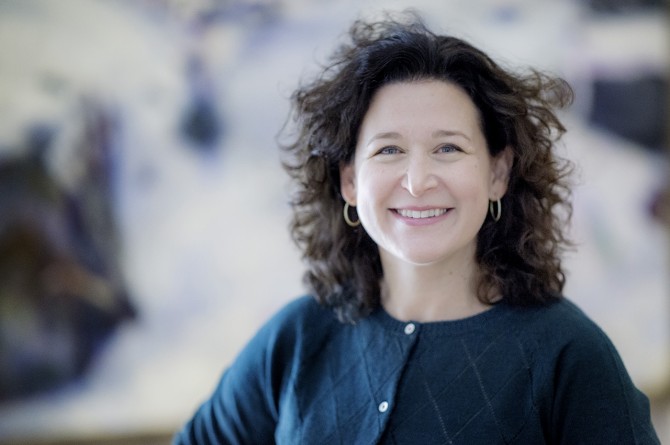Jessica Martinez named to lead Johnson Museum
By Daniel Aloi
Jessica Levin Martinez, head of the Division of Academic and Public Programs at the Harvard Art Museums, has been named director of the Herbert F. Johnson Museum of Art at Cornell.
Her appointment as the Richard J. Schwartz Director of the museum was approved by the Cornell University Board of Trustees at its meeting Jan. 31 in New York City. Martinez will begin her term July 15.
“I am pleased to have Jessica Martinez join Cornell to lead the Johnson Museum,” Provost Michael I. Kotlikoff said in announcing the appointment. “Among an extremely talented pool of candidates, she impressed the search committee with her commitment and approach to museum-based interdisciplinary teaching, her willingness to take creative risks, and her managerial experience. She has a genuine enthusiasm for the academic museum and supporting the creative work of others, and we look forward to her leadership in building and further enhancing the impact the Herbert F. Johnson Museum of Art has on the campus and in the community.”
Martinez will be the museum’s fourth director since its founding in 1973. She succeeds Stephanie Wiles, who joined the Yale University Art Gallery as director in July.
Martinez’s extensive museum background began at Harvard as an undergraduate, when she switched majors from government to fine arts at Radcliffe College in her senior year. “I discovered art history and realized I could have a voice in that field,” she said.
She earned her doctorate in the history of art and architecture from Harvard in 2004, then went to Prague and Slovakia investigating the provenance of Nazi-looted artworks. She was an educator and administrator at the Smithsonian National Museum of African Art for four years before returning to Harvard in 2012, where the Fogg, Sackler and Busch-Reisinger museums were consolidated into one expanded facility in 2014.
Martinez has overseen teaching, learning and research initiatives at the museums that advance interdisciplinary work by faculty and students across the university, including Harvard Medical School residents. She advised graduate students, worked with collectors and museum supporters toward institutional advancement goals, and set a public programs agenda encouraging collaboration with campus and community partners.
She directed a staff of 11 and managed a $500,000 Andrew W. Mellon Foundation grant for a technical studies in art summer institute.
“One of the key goals of any great museum is to share its collections and expertise, and to invite new perspectives to make the museum more inclusive and more dynamic,” Martinez said. “Thinking of Cornell’s land-grant mandate, the Johnson Museum not only takes that role seriously, but with great joy; welcoming community members of all ages from throughout New York state. I’m so looking forward to meeting new people by looking at great works of art together.”
She helped establish an Art Study Center to make items from the collections accessible to anyone with a research inquiry or simple curiosity. She received the Harvard Hero award in 2017 for exceptional contributions to the university.
Martinez also led programs training Harvard students to design public tours and teach in secondary schools, and for postdoctoral fellows in museum practice; taught museum courses and lectured on African art at various museums and universities, including the University of Chicago. She has concurrently served as research curator of African art initiatives at Harvard since 2016.
“In a way, an academic museum like the Johnson is unique because it drives scholarship. It’s a place of both rigor and delight,” Martinez said. “It can be a place of beauty and of great intellectual challenge for people in so many fields of inquiry. Whether they’re deep in art history or in a field not typically connected to a museum, looking closely and thinking critically can make interdisciplinary connections and spark new questions.”
She said what attracted her to Cornell was “the astounding, global collection; groundbreaking curatorial projects and superb staff; and also the potential to work with such daring faculty and students across the campus.”
“I want the museum to be a site for research and development, a place where people can test ideas,” Martinez said. “Nearly 400 classes are already visiting the Johnson Museum each academic year, and that constant flow of opportunity with new students, fresh eyes and bold questions is exciting to me.”
Media Contact
Get Cornell news delivered right to your inbox.
Subscribe


